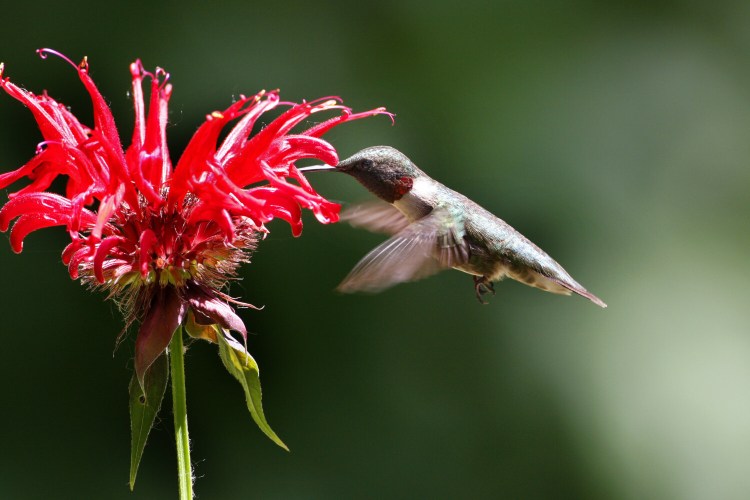When I read on the Maine Audubon Society website that the organization has started selling plants not native to Maine, I was surprised.
I was sure that the environmental stalwart had not given up its commitment to plants that Maine birds, insects and other species need to survive. But I wondered about what brought on the change.
The non-natives being added are good plants. One of them, Liatris scariosa or northern blazing star, is native to York County but not the rest of the state, according to the standards Audubon uses, so Audubon previously excluded it from the plant sale.
Eric Topper, in explaining the change, said that some birds, insects and other animals, as well as some plants, have been expanding their historical range, primarily north and east as the climate has gotten warmer. So, why shouldn’t Audubon sell plants whose historical range is a bit south and west of Maine.
The change wasn’t a snap decision.
“As long as we’ve been in the native plants restoration world, six or seven years now, we’ve struggled with how we define native,” Topper said in a telephone interview.
When the sales started, Maine Audubon went with the list, also used by state officials, called BONAP, the Biota of North America Program, which has a long history of studying where plants are native. Audubon also consulted with state officials, and if the state thought a plant shouldn’t be on the list, it came off, Topper said.
As a result, Maine Audubon’s list of native plants for sale (mainenativeplants.org) was among the most restrictive of the Maine-native lists out there.
Over the years, with real-life experience, officials began questioning the limitations. Audubon staff noticed how much hummingbirds love Monarda didyma, with the common names scarlet bee balm or red bergamot. While working in the greenhouses to water plants, bumblebees (which are native) cover the Liatris spicata, and love it. So, Audubon added these plants, which are not strictly native according to the definition it had chosen to use, because of their huge benefits to the birds and other wildlife that Maine Audubon’s mission is to protect.
Topper said that his organization did not make the decision without outside help. It got assistance from Dan Jaffe, now a horticulturist with Norcross Wildlife Foundation in Massachusetts, who co-wrote the book “Native Plants for New England Gardens” while he was with Native Plant Trust.
In addition to Liatris spicata, Monarda didyma and Liatris scariosa, the other non-native plants Audubon added are Echinacea purpurea or purple coneflower, and Coreopsis lanceolata or lanceleaf coreopsis – both native to the Northeastern United States but not Maine.
Buyers seem to have agreed with Audubon’s choice. The scarlet bee balm, lanceleaf coreopsis and purple coneflower have already sold out for this year.
Topper is encouraging people to look for those species – not cultivars of those species, which would have a trademarked name with single quotation marks at the end of it – at local nurseries, and plant them.
I asked Topper if selling plants that might not be strictly native in Maine amounts to assisted migration. There has been some concern, which I wrote about in 2018, that plants might become extinct because their native habitats are becoming too warm for them to live. And those plants can’t migrate naturally as fast as climate change is moving their ideal weather farther north.
Topper said that the sales might be assisting migration, but that wasn’t the group’s intent. He thinks the species had been coming to Maine anyway, because people like them and have been planting them in their gardens.
One thing Topper said toward the end of our interview surprised me. Despite Maine Audubon’s emphasis on native species, he realizes that non-natives also have a great benefit for wildlife. He had just spent a week in the wilderness, places where the forest has taken over abandoned farms. Apple trees – native to Kazakhstan – in those woods still thrive, and are a huge benefit to wildlife, he said, giving just one example.
On a side note, Maine Audubon’s plant sale has been going well this year, and while three of the new introductions have sold out, plenty of good native plants are still in stock.
And he says, and I agree, that September and early October are excellent times to plant shrubs and perennials in Maine. Also, buying them will help the Audubon staff.
“We don’t want to take care of these plants in the winter,” he said.
Tom Atwell is a freelance writer gardening in Cape Elizabeth. He can be contacted at: tomatwell@me.com
Send questions/comments to the editors.


